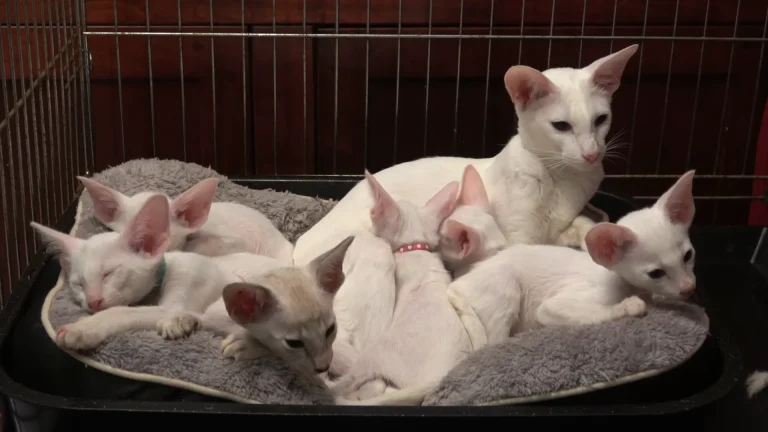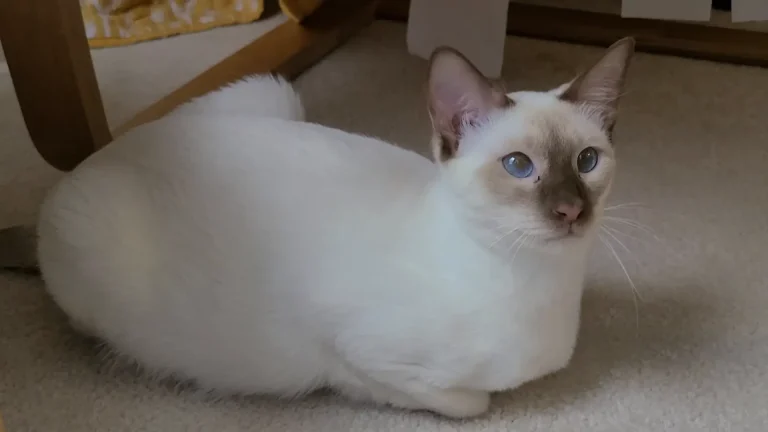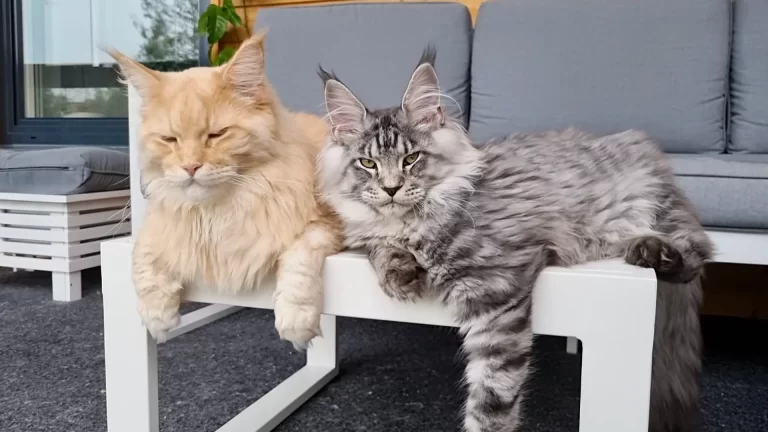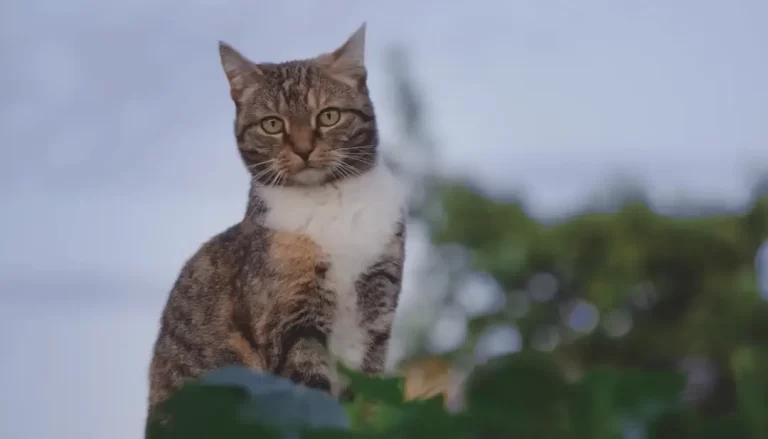Persian Cats
Experts consider the Persian cat to be one of the oldest and finest cat breeds existing today. They are also famous because of their longhair, chubby face, thick fur, and snub nose. These have a huge variety of eye color shades like blue, green, gray, and copper.
These cats are mostly quiet and calm. They are known because of their naughty nature. They are the priority of many families due to their beauty, cuteness, and naughty nature.
General Information
- Origin: Iran
- Population: 2 Million+
- Suitable Temperature: 20°C to 28°C
- Grooming Requirements: High
- 1st Sighting: 1600s
- Price Range: $1000 to $5000
Characteristics Overview
- Body Size: Big
- Body Type: Muscular
- Average Weight: 6 KG (13 lbs.)
- Colors: 60+
- Hair Size: Long
- Life Span: 12-17 Years
- Temperament: Friendly, Social
Personality Overview
- Intelligence: Medium
- Vocalization: Medium
- Affectionate: High
- With Kids & Other Pets: Good
- Hunting Skills: Low
- Climbing Skills: High
- Dependency Level: Medium
Origin:
The Persian cat breed originates from the historical region of Persia, which is now known as Iran. In the Middle East countries, this breed is known as “Shirazi Cats”. In the 1600s this breed was first imported into Europe from Persia. After World War 2 they became a highly increasing cat breed in the US. They became famous globally due to their charm, elegance, and cuteness.
Population:
After the Maine Coon, Ragdoll and British Shorthair breeds, this long-haired thick fur cat is the another most famous breed in the US and 5th largest breed in the world. The majority of its population (One Million) lives in the US, and other countries followed by the UK, Canada, and Australia. The exact population can’t be traced because many Asian countries have Persian cats, but they didn’t register them. Yet, it is assessed that their population is around 2 million in the world.
Price:
The price relies on many factors like the kitten’s lineage, gender, coat and color, health, and breeder’s reputation. A well reputed breeder will charge higher than the other small breeders. Normally kitten’s prices start from $1,000 to $5,000 in the US.
History:
They were the first breed in Iran and were famous for loyalty. Persian cats were introduced to Italy from the region of Khorasan in1620s. Afghanistan and Iran first exported this long haired cat breed in the 19th century. In the 20th century after the Maine Coon the chubby face cat was the second most famous breed in Us. In Europe, the first chubby face cat was introduced in the 1600s.
Queen Victoria was particularly fond of the Persian cat, and she owned several of them. They were also known as “Sultan Cats” because they were favored by royalty in Persia. This Long Haired breed was one of the first felines to be accepted by the American Cat Fanciers Association (ACFA) in 1906.
Characteristics:
Persian cats can be recognized by their long and thick hairs, round face, large eyes, tiny nose, and short muzzles. They appear to be a princess of your home because they get your attention through their activities.
This breed can be classified into three types due to minor differences in their shapes, which are:
Traditional Persian Cats
This is the most common type of Persian cat recognized by its doll face, longer nose, and more traditional appearance. They are also called doll-faced Persian cats whose nose is outside their face that help them to breath easily. They have long hair on their whole body except their shoulders and upper hind legs. With lower chances of illness, it is generally a healthy type of Persian cat.
Peke-Faced Persian Cats
This type of Persian Cats looks similar to traditional cats but their pressed face and square shaped head makes them different from them. They also have long fur and a tiny nose between their big round eyes. They are unlucky because their nose is also pressed inside their face which means they face difficulty in breathing.
Teacup Persian Cats
Persian cats are generally known as medium to large sized cats, but this is the short and cutest type of Persian cat. This is an expensive type of this breed because many people want to have a small size Persian cat. But you think twice before getting a teacup type of this breed because they have many health issues. They face more difficulty in breathing than the other types of Persian breed.
Their characteristics and physical attributes are explained below:
Lifespan
The average lifespan of a Persian cat is around 12 to 17 years, but experts say that if they are well-taken care, a healthy diet provided, and provided with a suitable environment then they can live longer than 17 years to 20.
Size & Weight
The size and weight of Persian cats depend on several factors like age, gender, and overall health, and it’s entirely narrated below the table:
| Measurements | Male | Female |
|---|---|---|
| Height | 10-12 Inches (25.4-30.48 cm) | 9-11 inches (22.86-27.94 cm) |
| Length | 14-18 Inches (35.56-45.72 cm) | 13.5-17.5 inches (34.29-44.45 cm) |
| Weight | 9-14 lbs. (4-6.3 kg) | 7-12 lbs. (3.5-5.5 kg) |
Click here to read more about the Persian Cat Growth.
Appearance
Persian cats have thick and long silky fur that can be different in colors. Their fur could be curly or straight depending on whether you brush the fur or not. They have big cheeks that give them a chubby look. These long haired cats have ears on their round shaped head and are fully covered with fur.
They have a tiny snub nose. These cats have round and medium-sized eyes that are primarily green, blue or copper. These cats have short necks, broad chests, and short but strong legs. Their tails are always short and bushy. We can describe their body as muscular in a single word.
Temperament
This kind of thickly-coated long-haired cat is not noisy. It is calm and quiet. They are shy and reserved with new strange people around them and in unfamiliar environments. These cats are mostly known for their protective and loyal behavior toward their humans.
They communicate with other cats through vocalization, such as meow purrs, and chirps. They might be protective of their humans and will meow loud or hiss at strangers who come to their territory.
Colors & Patterns
These felines are one of the most popular felines in the whole world and can be found in colors and patterns. There are almost 60+ recognized different color patterns which are mentioned below.
Tabby Pattern:
They have a tabby pattern on their fur, which can be in different colors and that can look like dots, swirls, or stripes. Some common colors in tabby pattern are:
- Silver Tabby
- Brown Tabby
- Lilac Tabby
- Cream Tabby
- Blue Tabby
- Chocolate Tabby
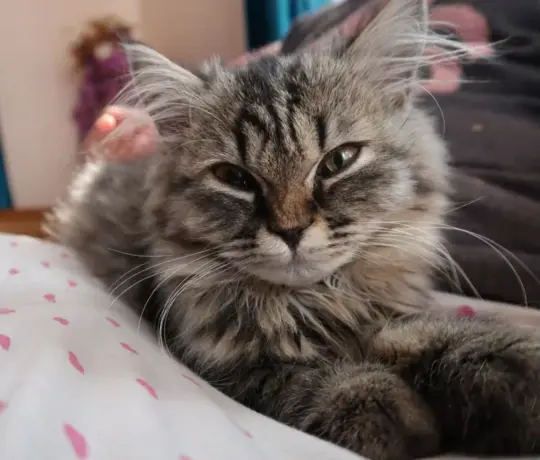
Solid Pattern:
Solid color Persian cats have a single, uniform coat color like black, blue, white, cream, and a variety of colors in gray.
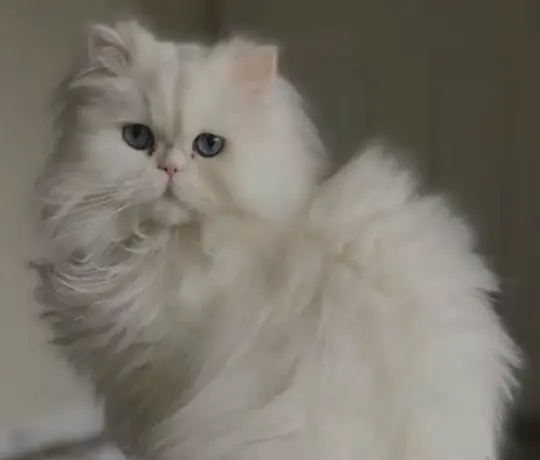
- Red Persian Cat
- Blue Persian Cat
- Fawn Persian Cat
- Cream Persian Cat
- Cinnamon Persian Cat
- Black Persian Cat
- White Persian Cat
- Lilac Persian Cat
- Chocolate Persian Cat
Bi-Color Pattern:
Bi-color Persian cats have two different colors in their fur, mostly white with another color. The distribution of color creates a unique appearance.
- Black & White
- Red & White
- Blue & White
- Chocolate & White
- Cream & White
- Lilac & White
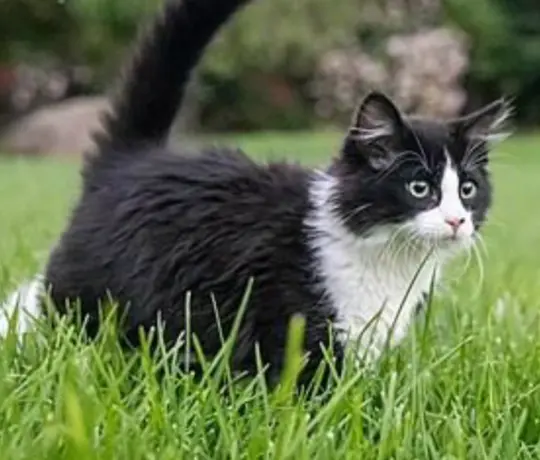
Color Point Pattern:
In this pattern, cats have lighter color on the whole body with darker color on their face, paws, ears. This pattern is common in Siamese cats, but these Persians are also available in this pattern. Some common color point Persian colors are:
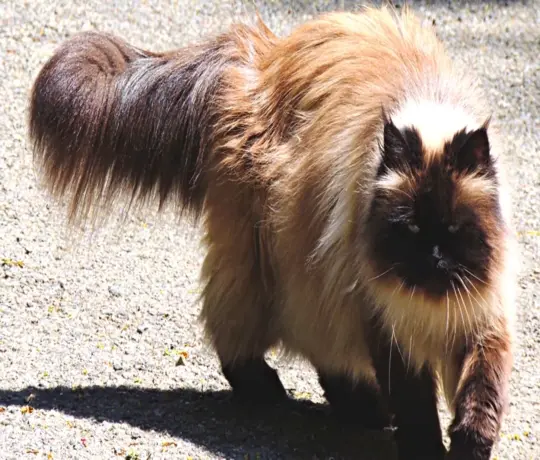
- Seal Point
- Chocolate Point
- Cream Point
- Lilac Point
- Blue Point
Smoke Shaded Pattern:
Smoky or shaded cats have colors with silver or golden shades. In the Persian breed, a limited variety is available in this pattern.
- Silver Shaded
- Golden Shaded
- Black Smoke
- Blue Smoke
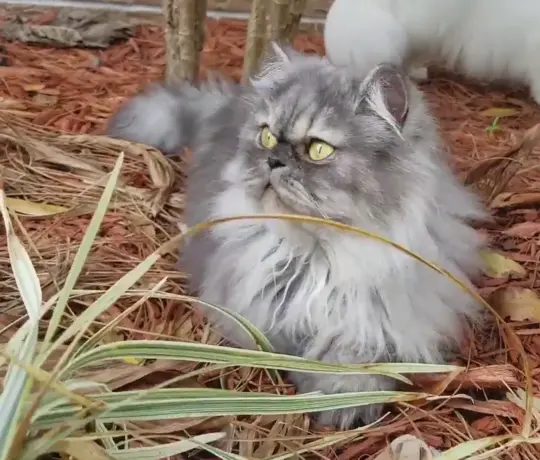
Other Colors & Patterns:
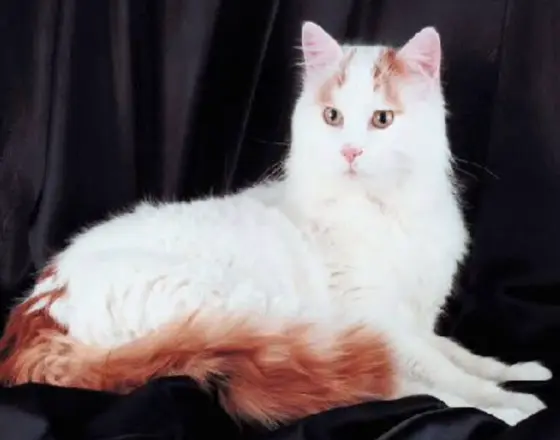

As we know there is a wide variety of Colors and patterns available, these cats can also be seen in tortoiseshell, calico, chinchilla and Parti-color patterns. They can be seen in van patterns with different colors.
In simple words, we can say that we have a big number of choices for colors if we choose Persian cats to pet.
Personality:
Persian cats are recognized for its ability to be trained and for its intelligence. These cats can be playful with children and chase toys or play hide and seek. They need the attention of their humans. They welcome their humans at the door when they return home. They enjoy sleeping in their human bed at night.
Intelligence
They can learn simple tricks like staying, sitting, and coming when humans call. They are the quickest learners. Their curious nature makes them solve simple problems such as getting into the box and opening the door.
Affectionate
Persian felines love to prep and groom themselves. They love to cuddle and play with their owners while sitting on their lap or shoulder, and they love to be around their humans. This kind of long-haired cat is affectionate, gentle, sweet, and naughty.
Vocalization
Persian cats are a quiet and calm breed of cat. They never make noise without any reason. Sometimes they may meow and ask for food, and attention. When Persian cats are feeling happy and relaxed, they may purr with joy. They show their excitement by way of chattering. They may scream when they are scared or frightened.
Hunting
Persian felines are not known as good hunters. They have a low hunting drive as compared to other breeds. They are not interested in chasing or catching animal insects.
If Persian cats behave like hunters during play, supply them with a variety of toys. This keeps them happy, excited, and busy indoors.
Behavior with Kids and Other Pets
Persian cats are happy around children. They do not scratch or bite the children. They are very gentle to kids. They avoid using their teeth and claws unless they feel scared or frightened of them. When you introduce them to other pets at an early age, they establish good bonds with other pets.
Dependency
This thick fur and doll face cat is mostly dependent on its human for care. They rely on their humans for care, feeding, grooming, and companionship. They usually find comfort in their humans.
Health Issues:
They are popular and charming pets all over the world but also have some health issues. It’s really important to do good care and must do their regular vet checkup. Some common diseases are mentioned below the table.
| Diseases | Explanation | Symptoms | Treatment |
|---|---|---|---|
| Eye problems | Their eyes are sensitive and may face some issues like Entropion that affects eyelid rolls inward and outward, Corneal ulcers, Cataract and Progressive retinal atrophy that must be leading to blindness | Irritation, dryness, pain, infection, and trauma. Some issues may lead them to blurred or double vision. Bumping into things, night blindness, and squinting are also symptoms of eye problems in Persian cats. | Take your cat to the doctor for surgery if necessary. Use antibiotics 3 to 4 times to prevent infection. Clean their eyes if any discharge is noticed. |
| Respiratory problems & skin and coat issues | These types of diseases are common in Persians due to their flat face, tiny nose and thick fur, and the skin producing excess oil which makes it difficult to breathe. | Hair loss, skin infection, dandruff, itching, and allergies, Cats may face difficulty in breathing. | Regular brushing the cat fur reduces the dead hairs which improves their skin care. Give a bath to your cat once a week. Keep them in a clean environment and consult with veterinarian. |
| Dental issues | Due to long hair, and flat faces, they do not feel easy to eat and clean teeth which causes many diseases. | Tooth loss, pain, and infection | Brushing their teeth daily, Gum surgery, and tooth extraction are the best dental treatments. |
| Obesity | Obesity is a common problem in all breeds. Different diseases are caused by this. | Diabetes, cancer, skin problems, and arthritis. | Medication for your cat must be prescribed. Do not overfeed your cat and exercise is essential for your cat. |
| Feline lower urinary tract | It is a common disease in flat-face cats, and it occurs due to many reasons like stress, infection, bladder stones, bad diet, and obesity. | They cry loudly when they do urine and screams caused by pain. Blood comes with their urine. Sometimes, they are not able to urine at all in this disease. | Painkillers help them to reduce their pain. Give them antibiotics and surgery to remove stones and the bladders. |
Care of Persian Cat:
If you have Persian cats, you have to take more care of them as compared to other breeds. They need more attention from their humans than the other breeds. Their grooming and feeding all depend on their humans.
You must take full responsibility for her as your family member. It’s our responsibility to understand their emotions through their behavior. We are listing some caring steps to take well care of Persian cats.
Research
Before buying or adopting Persian cats, you must do some strong research about them. What is their necessity? What do they like or dislike? Try to get some know-how for them. Firstly bring their feed, food bowl, litter box, and some toys, then go to bring your cat.
Quality Nutrition
Feed them high-quality food in a balanced way. Make sure to give them recommended expert feed, for that you must concern your cat vet. Protein is important for this breed, and you take it from fish and chicken. The long-haired cats love the fish the most ever.
Fresh Water
These thick fur cats always need fresh, clean, and pure water. Ensure that the water in their bowls must be changed on a daily basis with filtered water because tap water is unhealthy for them.
Grooming
Bathing your Persian cats is necessary once a month to make them neat and clean. Remove all dirt, and oil from their fur with a mild cat’s shampoo during bathing. Brushing your cat fur regularly with a soft smooth brush will help to remove loose and tangled hair. Once a week clean the cat’s ear with cotton buds and remove all dirt and wax. Trim their nails after two weeks to prevent overgrowing.
Exercise
Persian cats always need some exercise to stay healthy and fit. They must walk for 30 mins regularly. They might face obesity and other health issues if no attention is given to their exercise.
Move a laser pointer around them and enjoy watching your Persian cat chase. This funny activity keeps them physically active. Create an obstacle course with boxes, chairs, tables, and cupboards for your cat, and let them climb, go under, and let them explore these things.
Litter Box Care
The size of the litter box must be spacious and large, so your cat can move around comfortably. Place the litter box in an isolated area, not in a noisy place. The litter box should be cleaned after a week and scooped at least once a day.
Entertainment
Persian cats can be alone if you don’t give them attention or play. Bring some toys, puzzles, a tunnel, and hideout softball for their entertainment, so they can play with them. Keep them busy with their toys and give them full attention if they feel alone they will be sad and weak.
Pros & Cons:
Pros
Cons
FAQs:
Conclusion:
We came to know that Persian cats are one of the oldest cat breeds who earn their place in top 5 cats breeds due to their unique appearance. They are intelligent but not very active cats. But still they are the priority of humans to pet. Their flat face, tiny nose and long fur separate them from other felines. They are the best lap cats and after a tough routine, you feel relaxed spending time with them. Although they have many health issues, their caring routine is not different from the other cats. We believe that you are now ready to understand Persian cats after reading this article.




